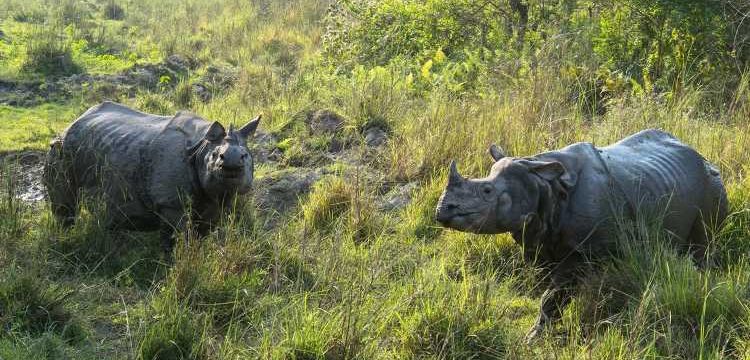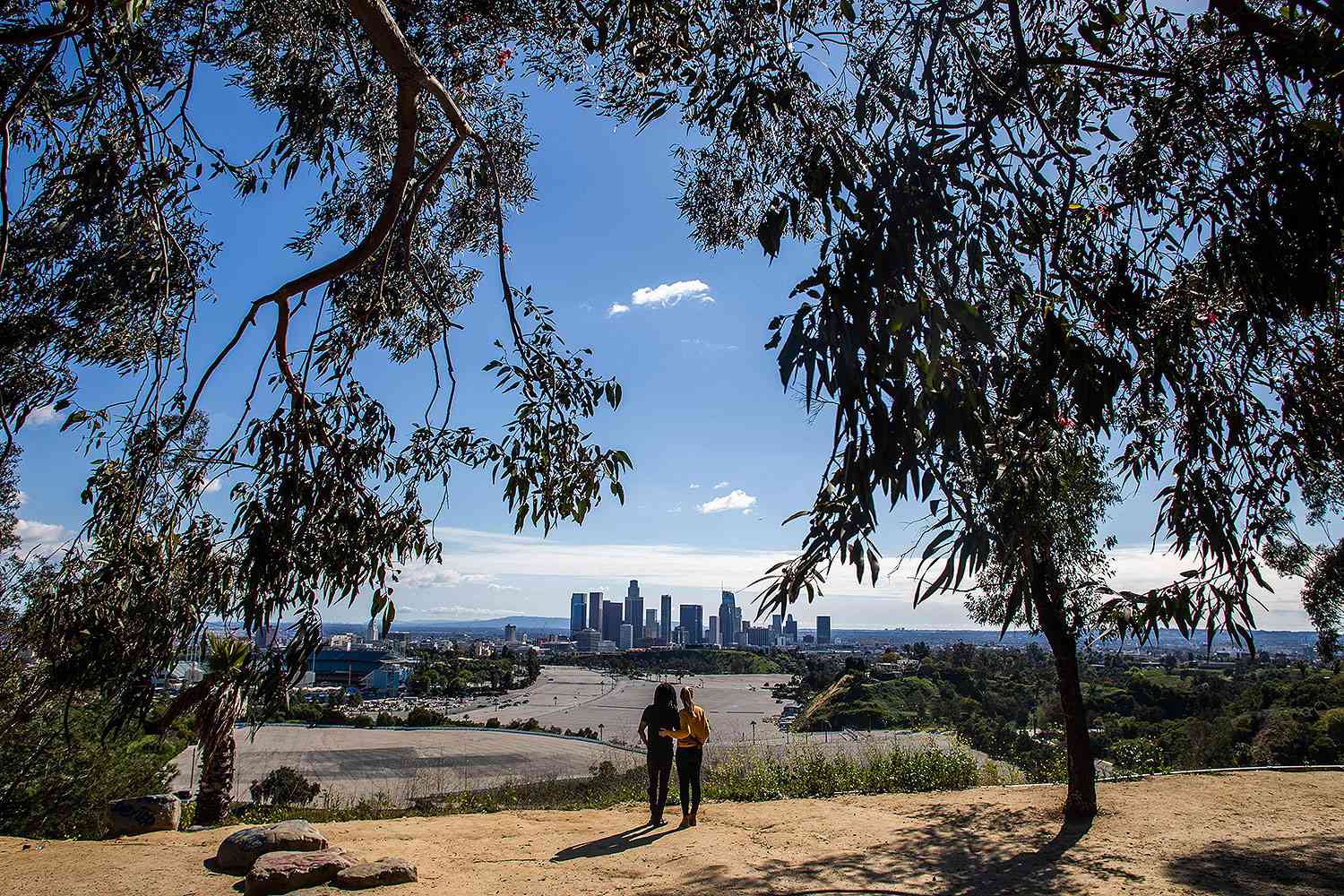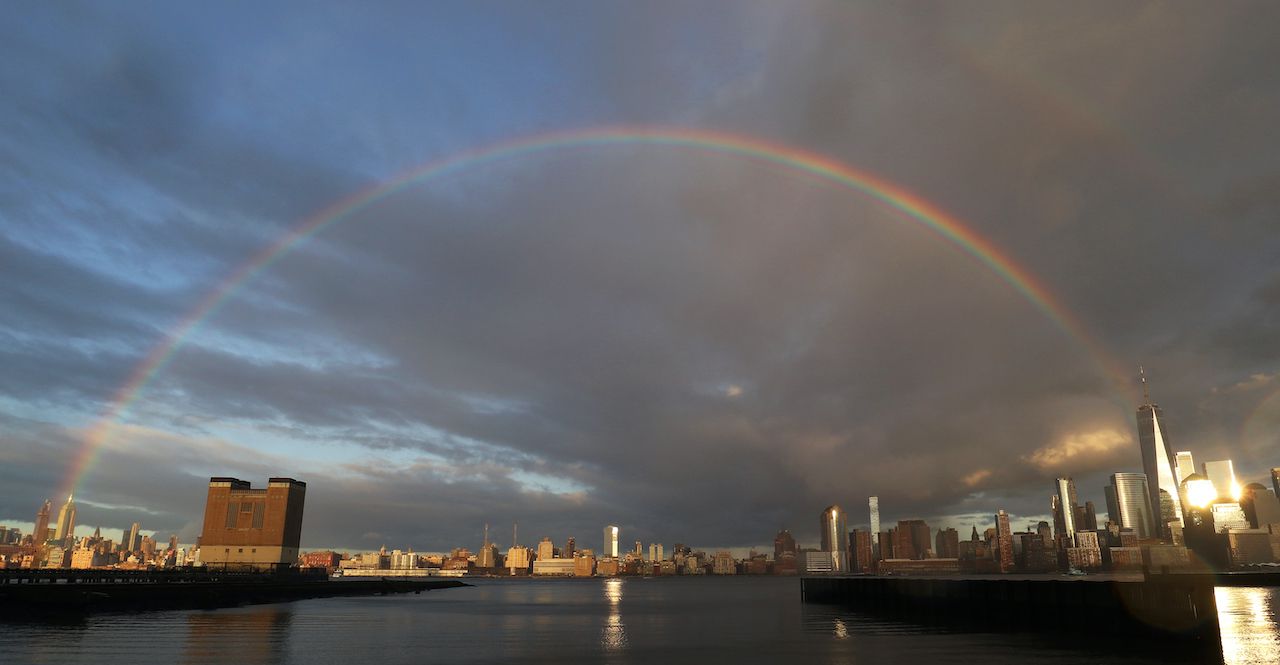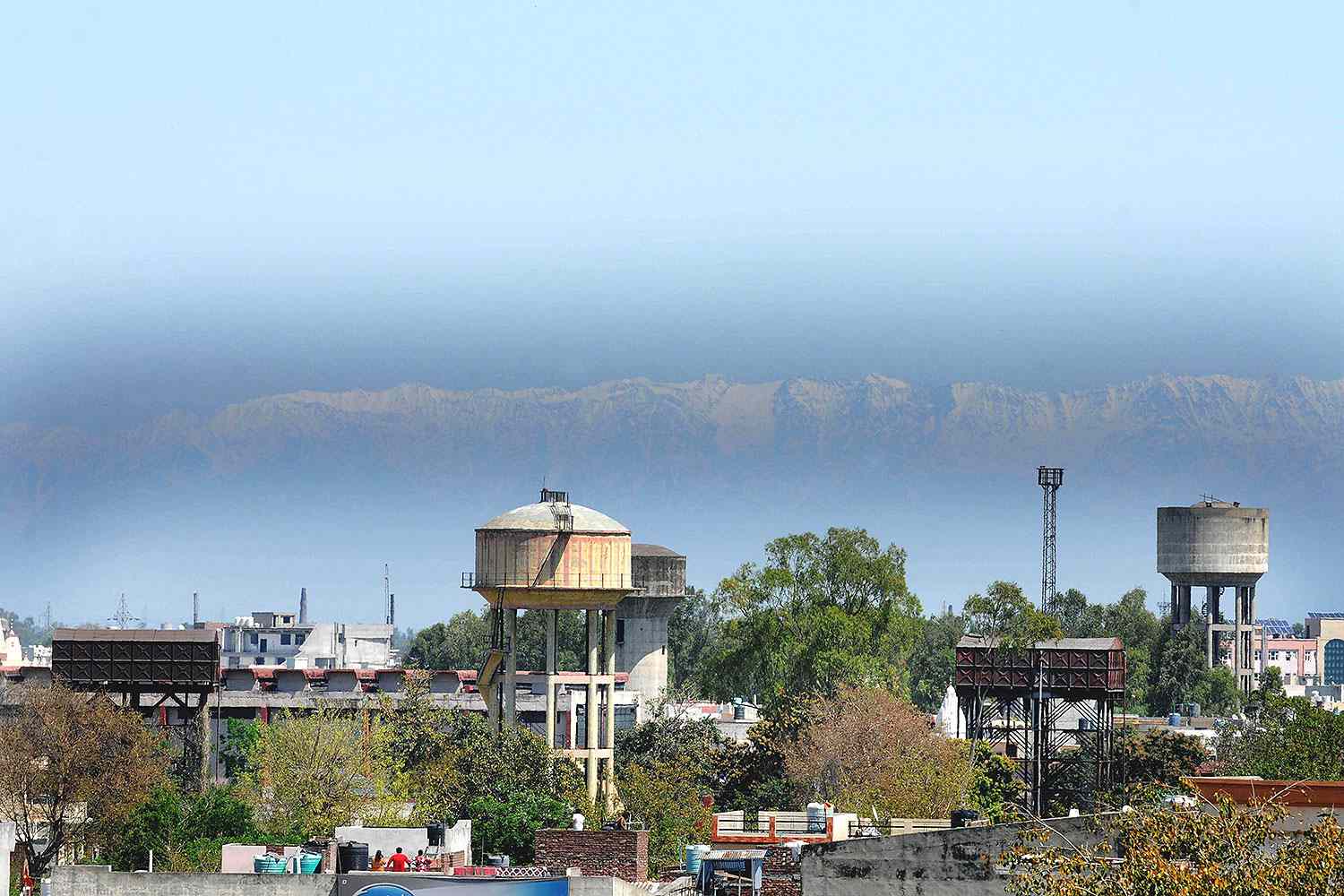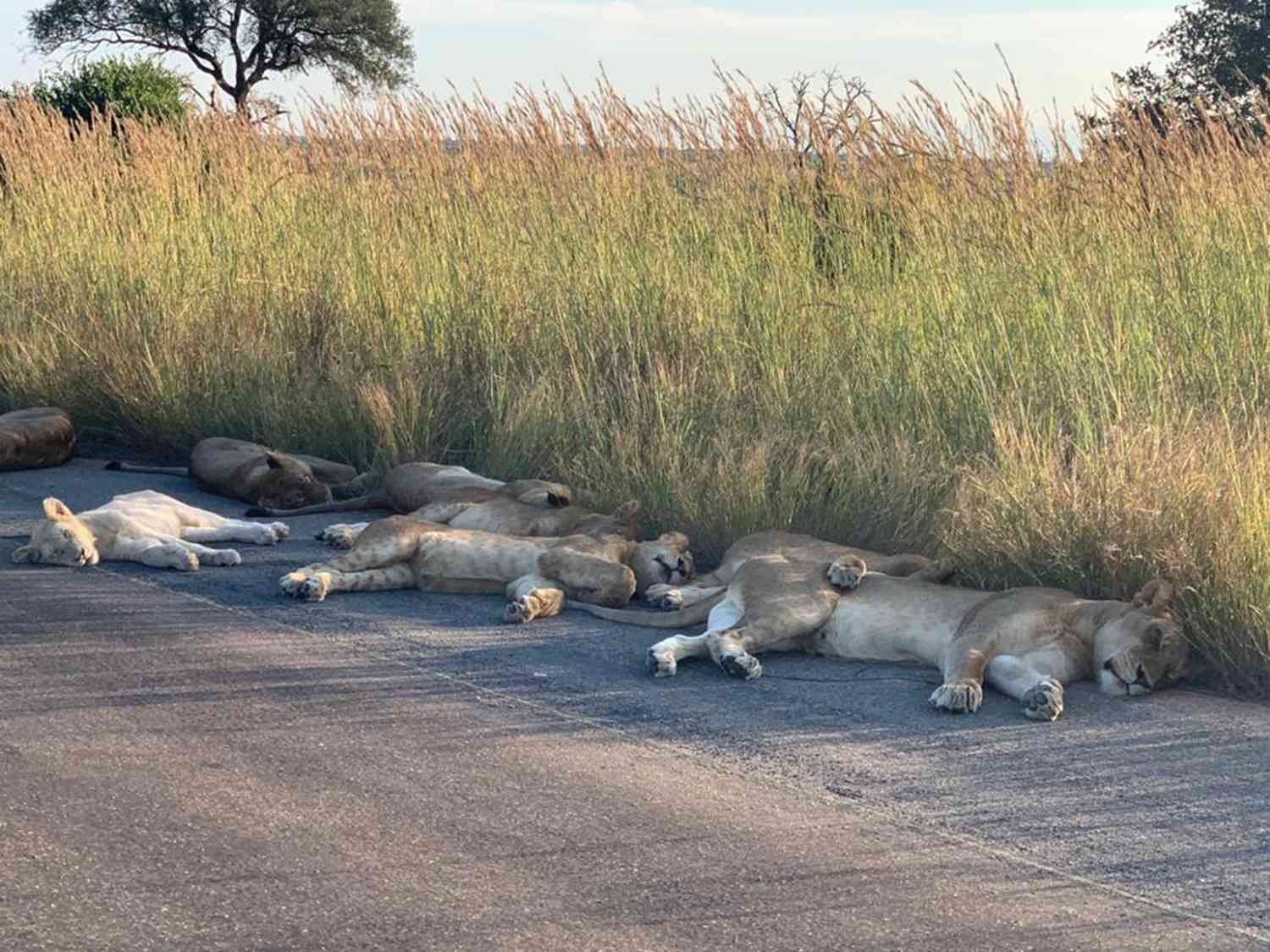Nepal’s Endangered Rhino Population Experiences Major Growth
Conservation officials believe worldwide travel restrictions placed in response to the ongoing COVID-19 pandemic has contributed to a population boom among Nepal’s endangered one-horned rhinos.
According to multiple outlets, a recent census conducted by Nepal’s Department of National Parks and Wildlife Conservation shows that the country’s one-horned rhino population increased by about 17 percent from the previous survey six years ago. The census also notes that the current one-horned rhino population in Nepal is 752 rhinos.
“It’s great news for all of us who care for conservation of rhinos,” Deepak Kumar Kharal, the department’s director-general, told the Wall Street Journal in April. “COVID-19 had a small but an important role helping the growth in our rhinos’ population.”
1of 15
Earth Is Shaking Less
With fewer cars, trucks and trains driving over roads and freeways, there has been a noticeable drop in vibrations measured in Earth’s crust, according to a report published in the journal Nature in early April 2020.
Thomas Lecocq, a seismologist at the Royal Observatory in Belgium, first noticed a reduction in seismic noise in Brussels. While observing ambient seismic noise in the area, he found the city had reduced levels of noise similar to what it sees on Christmas Day — a holiday that typically sees many people stay indoors to be with family.
2of 15
Venice’s Canals Are Clearing Up
While the water in the city’s canals isn’t necessarily getting cleaner, it is clearing up.
“The water now looks clearer because there is less traffic on the canals, allowing the sediment to stay at the bottom,” a spokesman from the Venice mayor’s office told CNN in March 2020.
“It’s because there is less boat traffic that usually brings sediment to the top of the water’s surface,” the spokesman added.
3of 15
Water Wildlife
With clearer waters, seaweed and other underwater wildlife can be seen a lot more easily without the normal motorboat traffic.
4of 15
Wild Mountain Goats Take Over a Welsh Town
In late March 2020, herds of mountain goats were seen taking over the streets of the northern Wales town of Llandudno.
“The goats live on the hill overlooking the town,” Llandudno resident Carl Triggs told CNN. “They stay up there, very rarely venturing into the street.”
Without many humans around, the goats can be seen in photos and videos roaming around on the streets — from car parks to sidewalks — munching on grass and hedges.
“They sometimes come to the foot of the Great Orme in March, but this year they are all wandering the streets in town as there are no cars or people,” Mark Richards, another resident, told the outlet.
“They are becoming more and more confident with no people,” he added, joking that he no longer needs to cut his hedge thanks to the goats’ munching.
5of 15
Pandas — After 10 Years of Trying — Finally Mate at Hong Kong Zoo
Despite being closed during the pandemic, the Ocean Park zoo in Hong Kong announced very happy news in early April 2020.
After “years of trial and learning” in an attempt to get their pandas, Ying Ying and Le Le, to mate since they arrived in 2007, they finally succeeded in naturally mating.
News that the giant pandas were triumphant in natural mating is “extremely exciting,” said Michael Boos, executive director for zoological operations and conservation at Ocean Park.
“The chance of pregnancy via natural mating is higher than by artificial insemination,” he explained.
The zoo, which closed in late January 2020 due to coronavirus, began to notice common panda breeding behaviors in late March of that year.
“Ying Ying began spending more time playing in the water, while Le Le has been leaving scent-markings around his habitat and searching the area for Ying Ying’s scent,” according to the release.
6of 15
More Sika Deer Roam the Streets in Japan
Nara, a popular ancient city where free-roaming deer are an attraction for tourists, has seen a steep decline in visitors since the pandemic.
In March 2020, groups of sika deer were seen wandering around the city’s residential area looking for food. The deer are used to being fed by tourists who come and see the beautiful animals, but with the world on lockdown, the deer have ventured off to new destinations.
7of 15
Air Pollution Has Declined in Los Angeles
The car-dependent city experienced minimal traffic on the roads in 2020 since residents had been staying home.
L.A. has some of the highest smog levels in the country, according to the New York Times, but now, empty streets and highways are contributing to lower levels of air pollution. Preliminary data from the European Space Agency’s Sentinel-5P satellite show that atmospheric levels of nitrogen dioxide were considerably lower over L.A. in the first two weeks of March 2020 compared to the same period in 2019, the outlet reports.
8of 15
Hello, Los Angeles Skyline
Less air pollution means clearer skies in sunny L.A.
A couple, seen here, enjoys the view of Downtown L.A. while on a walk through Elysian Park on March 21, 2020.
9of 15
Air Quality Generally Is Improving
NASA satellite data reported in 2020 that better air quality could be seen in areas that had been under lockdown — a trend that started in previously badly-struck countries including China, Italy and the United States.
Northeast states in the U.S., including New York, Philadelphia and Boston, saw a 30 percent drop in air pollution in April of last year.
10of 15
Megafauna Returns to Yosemite
Since U.S. national parks had closed to visitors last year, park rangers reported that bear sightings “quadrupled” and other species, including bobcat and coyotes, have become easier to spot as well.
11of 15
The Himalayas Can Now Be Seen from Jalandhar, India
Residents in northern India were in awe at the sight of the Dhauladhar mountain range, which is a lesser Himalayan chain of mountains, for the first time in “decades,” according to Global News.
Residents took to social media to share their excitement at the sight, due to a drop in pollution levels while Jalandhar was on lockdown.
“Never seen Dhauladhar range from my home rooftop in Jalandhar..never could imagine that’s possible..clear indication of the impact the pollution has done by us to Mother Earth .. this is the view,” one social media user tweeted on April 3, 2020.
“The same mountains from my home #Nozoom,” another added.
12of 15
Lions Are Enjoying More Naps on the Roads of South Africa’s Kruger National Park
Park ranger Richard Sowry noticed a sleeping pride while patrolling the roads at Kruger National Park in April 2020. Since the reserve had shut down since March 25, 2020, the lions have been seen taking naps during the day on the roads, which are usually busy with tourists in vehicles, according to BBC.
“Lions are used to people in vehicles,” Sowry told the outlet. “All animals have much more of an instinctive fear of people on foot, so if I had walked up they would never have allowed me to get so close.”
Normally, lions are seen on the roads at night, especially on winter nights, because the tar retains a lot of heat, BBC reported.
13of 15
Sea Turtles Are Nesting More Peacefully
With stay-at-home orders in place back in 2020, people stayed away from beaches, which allowed sea turtles to thrive in their habitats.
David Godfrey, executive director of the Sea Turtle Conservancy, told CBS News in April 2020 that thousands of turtles migrated to nesting beaches in the Southeastern area of the U.S., and that “all of the potential positive impacts relate to changes in human behavior.”
“All of the reduced human presence on the beach also means that there will be less garbage and other plastics entering the marine environment,” Godfrey said. “Ingestion and entanglement in plastic and marine debris also are leading causes of injury to sea turtles.”
All seven species of sea turtles are endangered, according to the outlet, so those improvements were especially positive.
“We expect that thousands of hatchlings that ordinarily would be disoriented by lights this nesting season will not be — and are more likely to survive to reach the sea,” Godfrey added.
14of 15
Thousands of Flamingos Are Flocking to Mumbai, India
A record-breaking number of flamingos flocked to the city of Mumbai during their annual migration, according to several reports in April 2020.
Per Science Times, flamingos have been migrating to the city for their feeding and breeding season since the 1980s. However, residents tell the outlet that this year they’ve observed an increase in the number of birds that have shown up, sharing videos and photos on social media of thousands of birds bobbing in Thane Creek.
The Bombay Natural History Society (BNHS) also came out with a new report that estimated that the flamingo migration population was 25 percent higher in 2020 than in 2019. According to the report, around 150,000 flamingos have come to Mumbai last year.
“A major reason for the large numbers is also the large flocks of juveniles moving to these sites, following the successful breeding documented two years ago. Additionally, the lockdown is giving these birds peace for roosting, no disturbance in their attempt to obtain food, and overall encouraging habitat,” Deepak Apte, director of BNHS, told the Hindustan Times.
15of 15
Source: Read Full Article
